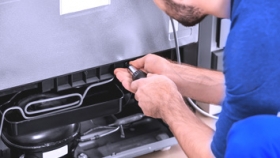Knowing different refrigerator components help you with choosing the best one to buy and also solving probable problems.
To start introducing you the refrigerator components, first divide them into two groups: internal components and external components.
Refrigerator internal components
Compressor
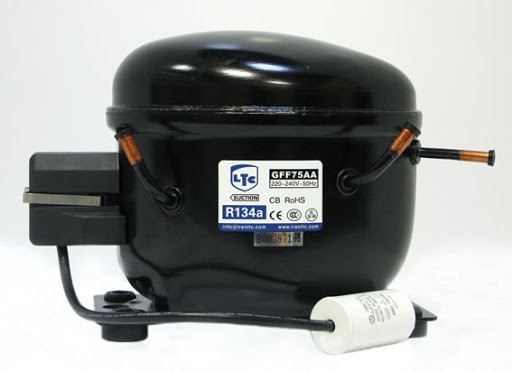
Compressor is the heart of your appliance among all refrigerator components. It has two main duties:
- Circulating refrigerant
- Changing the pressure of the refrigerant
Compressors are divided into 3 groups according to their appearance:
- Hermetic compressors
- Semi hermetic compressors
- Open type
Compressors used in home refrigerators is of hermetic type. The motor in this kind of compressors is a brushless electric one. Compressor and motor are located inside a shell and none of their parts are accessible. Just some tubes and electric connectors leave the shell.
Compressors are divided into 4 groups according to their function:
- Reciprocating compressors
- Rotary scroll compressors
- Reciprocating compressors
- Centrifugal compressors
We'll explain about different kinds of compressors in another article.
Note: reciprocating compressors are used in household refrigerators.
Tip: a special kind of oil is used inside compressors to reduce the friction between internal parts. This oil should be compatible with the refrigerant inside the refrigeration cycle.
Condenser
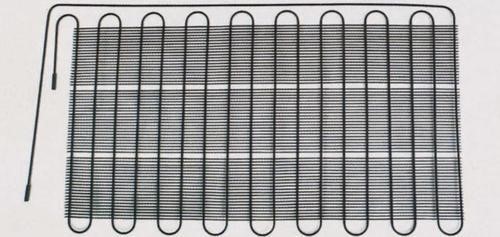
Condenser has a special appearance among other refrigerator components. It consists of series of copper or steel tubes that overlap in a grid or coiling pattern located at the back of the refrigerator.
Tip: in some refrigerators, condenser is inside the side walls of the refrigerator and is not visible.
Condenser is the refrigerator component which is responsible for heat exchange. In some refrigerators, the heat exchange is done naturally with the room air and in some others, it is done with the help of a fan. In fact, condenser is a heat exchanger which transfers the heat outside and cools down the refrigerant, changes it into liquid.
Note: maximum gap between the refrigerator and the back wall should be 30 cm in order for the ease of heat exchange.
Note: accumulating dirt and dust on condenser tubes hamper the process of heat exchange and consequently the cooling function of the refrigerator. So, clean it regularly and do it so carefully.
Evaporator
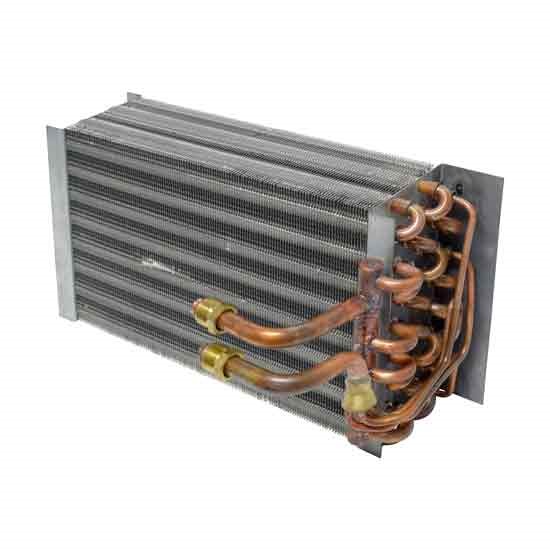
One of the other main refrigerator components is evaporator which is another heat exchanger consisting of copper or aluminium tubes sitting inside the refrigerator chamber. It works opposite of the condenser, converting refrigerant liquid to gas, absorbing heat from the air in the chamber.
Evaporator in some refrigerators has a fan to circulate air inside the chamber and in some other refrigerators, this circulation is done naturally and there is no fan. Some refrigerators have two separate evaporators for refrigerator and freezer chambers and some has just one.
Tip: in refrigerators having two evaporators, they are connected to each other with the accumulator.
Tip: in refrigerators with one joint evaporator, it is installed inside the freezer chamber and the refrigerator chamber temperature is controlled by a damper or diffuser.
Capillary tube and expansion valve
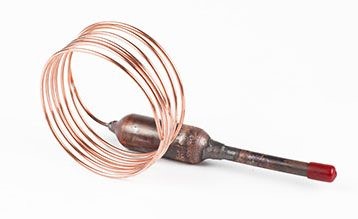
Refrigerant leaving condenser enters another refrigerator component called capillary tube. It is a fixed length tube with a very small diameter that is installed between the condenser and evaporator.
The length and size of the capillary tube depends on the refrigerant type, compressor type and evaporator capacity and its diameter is between 0.5 to 0.28 mm in refrigerators and air conditioners.
The refrigerant pressure reduces while passing through this tiny refrigerator component so that it can easily turn into gas in the evaporator.
Filter dryer
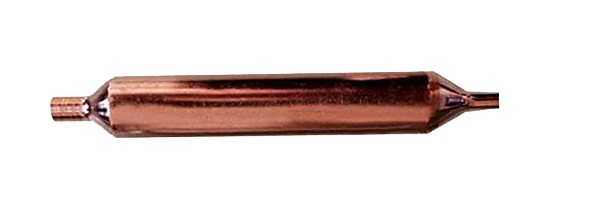
This key refrigerator component has two functions:
- Absorb system contaminants such as water which can create acid and hurt the compressor.
- Provide physical filtration
Refrigerant
Refrigerant is a fluid circulating in the refrigeration compression cycle. It absorbs heat from the food with the help of the evaporator and sends it out by the condenser.
Refrigerants are found in different types but the R134a and R600a are mostly used in household refrigerators.
Warning: always be aware of refrigerant leaking in the refrigeration circuit. It can badly hurt your appliance and you.
Note: a specific amount of refrigerant should be charged inside the circuit. The low or high amount of refrigerant reduces the system productivity. It is different according to the refrigerator type and capacity.
Thermostat
This refrigerator component controls the temperature inside the refrigerator. The thermostat sensor is directly attached to the evaporator and is adjustable.
Tip: In modern refrigerators, the temperature change is monitored by the sensors and the electronic board.
Diffuser or damper
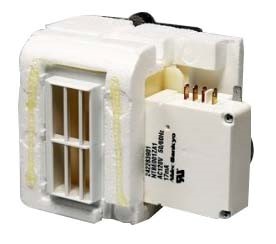
Diffuser is a simple refrigerator component which is used in single evaporator refrigerators as explained before. It adjusts the cold air flow from the freezer to the refrigerator chamber. Diffuser has a sensor which is controlled by the thermostat. If it senses the refrigerator temperature is too hot, opens the vent between the two chambers and leads the cold air from the freezer to the refrigerator
Tip: in some refrigerators, diffuser is controlled by the control board and in some, it is adjusted manually
Defrost system
This refrigerator component is in charge of defrosting the extra ice or frost in the freezer as its name indicates. The job can be done manually by pressing thermostat button or automatically by a system consisting of a heater and a timer.
Heater element
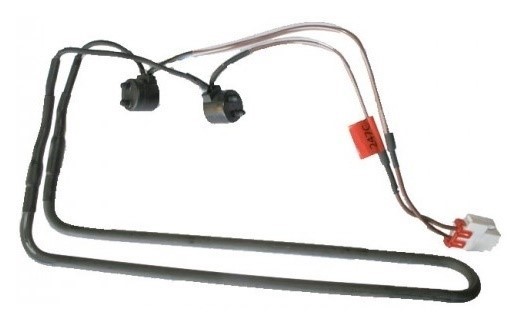
As you know, food has some moisture and this moisture can be absorbed by the evaporator surface and turns into frost. This frost disturbs the heat exchange of the evaporator. So, the refrigerator temperature gradually goes upper and upper. Evaporator should have a mechanism to melt this frost and this is done by a small refrigerator component called heater element.
The frost melted by the heater goes out of the refrigerator through a duct and normally evaporates on the compressor or condenser.
Note: if your refrigerator doesn't cool down at all, maybe the heater element is faulty.
Accumulator
This refrigerator component is in fact the refrigerant tank. It saves the refrigerant and releases it when necessary. It has another responsibility which is preventing water from entering the compressor in order to protect it.
Tip: household refrigerators doesn't have any special accumulator. The hermetic compressor's outdoor body shell works as an accumulator.
Overload
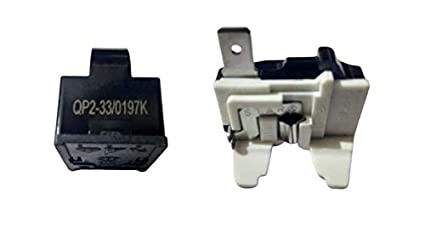
Overloaded is a tiny refrigerator component protecting the compressor. It is installed close to the compressor. If the compressor coil gets too hot or the inlet current to the compressor is too high, it turns the compressor off and when the temperature comes down, turns on the compressor again.
Tip: one of the reasons for the refrigerator not turning on, can be a faulty overload.
Refrigerator external components
Refrigerator chamber
This is the biggest refrigerator component which includes all the food. Its temperature is higher than 0 but keeps its ingredients cool enough.
Freezer chamber
The temperature of this component is lower than 0 and is used for storing frozen food.
Thermostat control
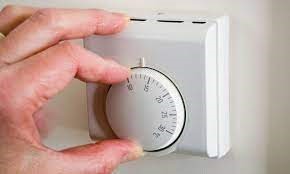
This refrigerator component is used for adjusting refrigerator temperature. It is a round switch in some units and is located on the refrigerator display in some others.
Note: the normal temperature of the refrigerator is 2-4˚C.
Light switch
This refrigerator component turns the unit light on and off. As soon as the door opens, electricity reaches the light and turns it on. When the door closes, the current is cut and light turns off. So, the electricity is not wasted.
Door gasket
This simple refrigerator component is the lining that goes around the refrigerator door to keep cold in and to keep heat out of the appliance.
Shelves
Refrigerator shelves are mostly made of acrylic plastic because they have to handle a lot of weight.
Drain compartment
The defrost water is accumulated in this refrigerator compartment. The water is then evaporated by the compressor heat
Water dispenser
This refrigerator component is installed in some units to make it easier for you to drink cold water. It occupies a big part of the door but is a useful component.
All the refrigerator components are not defined in this article but we have introduced you the most important ones. If you need more information about refrigerator and refrigeration systems, don't miss our refrigerator instructional video in HelloTechnic website. Our experts and teachers have gathered all their knowledge and experience to teach you about refrigerator installation, troubleshooting and repair. You can be a professional repairman after watching these videos.

